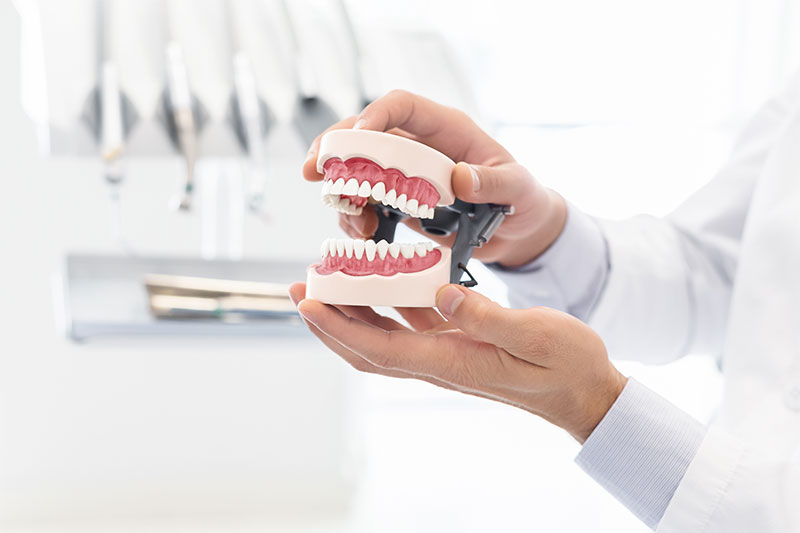
Double Jaw Surgery: Everything You Need to Know
Double jaw surgery was designed to help provide people with jaw alignment issues with the most optimal results. These include living a better, healthier life through a better functioning and positioned jaw.
In this article, we examine what double jaw surgery is, who it gets designed for, the different types of surgical procedures, the recovery process, and the potential dangers of the operation.
What is double jaw surgery?
Most jaw surgeries are performed by doing a single jaw separately. But double jaw surgery also referred to as a Bi-maxillary Osteotomy, is accomplished through operating on both jaws simultaneously.
This corrective surgery takes place to re-align all jawbones and fix both skeletal and functional issues in this area.
Double jaw surgery strives to solve the problem of protruding jaw, which causes a malocclusion, or irregular biting.
Who Needs Double Jaw Surgery?
How do you know if you need double jaw surgery?
Double jaw surgery is designed to solve a variety of different issues. The ideal candidates are ones who have an abnormally long chin or face. Those born with a protruding mouth are perfect matches for an operation such as double jaw surgery.
It is also beneficial for people who contain a square jaw with a malocclusion. This harmful biting condition exists when someone has a wrong relationship between the teeth when they approach each other as the mouth closes.
Various Double Jaw Surgery Procedures
There are different types of double jaw procedures performed today, depending on if the patient is getting his or her upper or lower jaw worked on. The goal of the process is to reshape, resize, and reposition the jawbones to give the person the most optimal outcome.
Cost of Double Jaw Surgery
Depending on the surgeon, location, and complexity of the issue, the double jaw surgery cost can range between $14,000 and $19,000. Again, this varies on the surgery. Please contact NextGen OMS to speak with Dr. Eftekhari about your operation.
Lower Jaw: Sagittal Split Osteotomy
The double jaw surgery procedure focused on the lower mouth can be a sagittal split osteotomy. This option cuts the back part of the jaw into two pieces and in a diagonal fashion. Depending on if the jaw is protruding or retruding, the surgeon repositions the lower jaw backward or forward. This operation is done to improve the bite.
The fixed jaw is usually held into place by titanium screws and occasionally plates. Sagittal split osteotomy is the most popular technique, and a lot of patients elect to go with this because it is efficient and straightforward.
Lower Jaw: Intra-Oral Vertical Ramus Osteotomy
The other lower double jaw surgery procedure is the intra-oral vertical ramus osteotomy. Instead of diagonal slices, the doctor cuts vertically toward the back of the lower jaw. This strategy enables the lower jaw to be trimmed and then guided backward.
Intra-oral vertical ramus osteotomy is a more complicated process. The patient usually must get his or her jaw wired shut for consecutive weeks during the healing process.
Upper Jaw: LeFort Osteotomy
While there are a couple of routes of surgery of the lower jaw, there is only one surgical procedure for the upper jaw. The LeFort osteotomy is when the surgeon cuts across the upper jaw bone, directly above the tooth roots. This step is done to detach the upper jaw from the skull.
Once this is completed, the upper jaw is then readjusted into its correct place and fastened with the titanium screws and plates. This procedure is for the final stages of operation for people with cleft lip or palate.
The End Goal of Jaw Surgery
What is double jaw surgery trying to accomplish?
The overall purpose of it is to give the patient a better and more pain-free life. From a double jaw surgery before and after standpoint, the patient should get both functional and aesthetic issues with the skeletal jaw corrected.
For people with the protruding jaw, you can see this clearly when looking at his or her side profile. After the surgery is complete, the jaw should be shifted back in a more normalized position.
Jaw Surgery Recovery Process
The double jaw surgery recovery process is a fragile one that should be treated with great care and caution.
For the patients who went with the intra-oral vertical ramus method, he or she should make sure to get his or her mouth wired closed for multiple weeks following the surgery.
For the first day after the operation, the patient should drink fresh juice and consume rice or food that does not require chewing. The consumption of regular food should not take place to avoid wounds, swelling, and drainage within the mouth. Make sure to secure medical dressings around the face until your appointment with the surgeon the next day.
On the second day, stay consistent with applying ice packs and coolness to the areas of pain.
For your food and diet intake, it is best to keep with liquid food if possible. The patient is usually released from the hospital on the third day, assuming no complications were found on the CT scan.
For the 4th through 7th days, continue to apply ice packs and rinse the interior of the mouth following meals. This technique eliminates the chance of infection or inflammation. Avoid as much physical activity as possible because of the added stress.
It is good practice to wear a compression band for the 4-6 days post-surgery as well.
How long does it take to heal from double jaw surgery?
It depends on which of the three methods that the surgeon performed.
The natural healing process for the bones usually takes around 4-6 weeks. For the intra-oral vertical ramus osteotomy patients, this time window might get elongated because his or her mouth will be wired shut.
Things to Be Careful of When Doing the Procedure
Is double jaw surgery dangerous?
Through various studies in South Korea, there can be complications associated with double jaw surgery. The operation alters your face to a higher degree than a nose job or botox because it changes your whole facial bone structure.
There have also been severe cases of permanent numbness within the face and sometimes paralysis. The dangers of double jaw surgery stem from instances of a skewed mouth, chronic jaw pain, crooked teeth, and the restricted ability to chew or smile.
These issues come from a large number of people who are applying for the surgery in such a short time. There is also an increased amount of competition among the rising number of plastic surgeons, especially in the country of South Korea, which results in more aggressive surgical methods.
Is jaw surgery painful?
Within the actual double jaw surgery, there is minimal pain because you are under anesthesia. In the recovery stage, you might experience painful symptoms and soreness, but it won’t be anything that will keep you awake throughout the night. You are usually administered pain medication to subside this discomfort throughout the healing process.
Is Double Jaw Surgery Worth It?
The double jaw surgery cost is well worth it. Being able to experience minimal pain through eating, smiling, and talking is a happy achievement for people who are unlucky enough to be born with a protruding jaw.
The question gets asked if double jaw surgery is dangerous, but the advanced technology and experience of our surgeons will alleviate this fear.
You can learn more about how the team at NextGen Oral Maxillofacial & Reconstructive Surgery Center is implementing advanced techniques to treat similar problems through oral and maxillofacial surgery.
If you have any questions, contact our office today.


